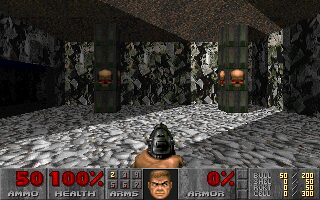The DOOM series stands as one of the most influential franchises in gaming history, revolutionizing the first-person shooter genre and establishing id Software as the masters of fast-paced action. The original Doom, released in 1993, didn't just improve upon Wolfenstein 3D - it created an entirely new gaming experience. Set on the moons of Mars, players controlled a space marine battling demonic forces that had invaded a Union Aerospace Corporation research facility. The game's engine allowed for varying floor heights, different lighting levels, and more complex level geometry, while the arsenal of weapons from pistol to BFG 9000 became instantly iconic.
Hell on Earth, Doom II, followed in 1994, expanding the formula with larger, more intricate levels and introducing the legendary super shotgun. The action moved from Mars to Earth itself, as hell's armies invaded the planet. While using the same engine as the original, DOOM II featured more varied environments and creative level design that pushed the technology to its limits.
The Ultimate DOOM in 1995 repackaged the original game with an additional fourth episode, Thy Flesh Consumed, which ramped up the difficulty considerably and showcased just how far level designers had pushed the DOOM engine's capabilities. This definitive version became the standard way to experience the classic campaign.
Final DOOM arrived in 1996 as a commercial release featuring two 32-level megawads: Doom 2 TNT: Evilution and The Plutonia Experiment. These weren't developed by id Software but represented the best of the thriving DOOM modding community that had emerged.
After years of anticipation, Doom 3 launched in 2004 as a complete reimagining of the series. Built on id Tech 4 engine, it emphasized horror and atmosphere over the run-and-gun gameplay of its predecessors. Set once again on Mars, Doom 3 used cutting-edge graphics and dynamic lighting to create genuinely terrifying moments, though its slower pace and focus on scripted scares divided longtime fans. While technically impressive and commercially successful, it represented a radical departure from the series' roots, trading the frantic action that defined DOOM for a more methodical, horror-focused approach.





